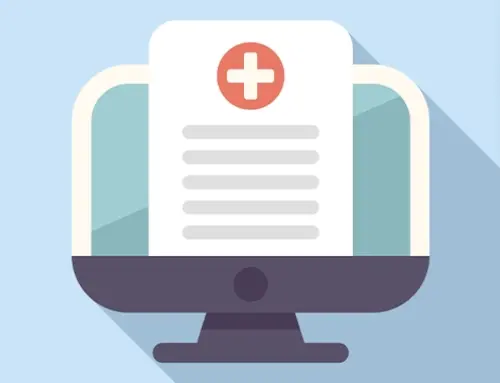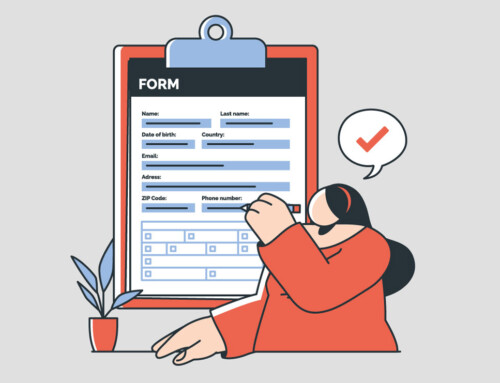Contents
Clinical Negligence Claims: Legal Insights and Patient Protections
When a patient is harmed due to poor care from a healthcare professional, such as a doctor or nurse, they may have grounds for a clinical negligence claim. These claims cover issues like misdiagnosis, surgical mistakes, or inadequate treatment, all of which can result in serious physical, emotional, and financial burdens for the patient. To win such a case, the patient must prove that the healthcare provider failed to meet the required standard of care, leading to harm that could have been avoided.
Pursuing a clinical negligence claim is not easy. It often requires gathering expert opinions, poring over medical records, and following a carefully planned legal approach. Patients need to be mindful of key steps, including collecting strong evidence, being aware of deadlines, and finding the right legal support to make sure their rights are upheld throughout the process.
What Is Clinical Negligence?
Clinical negligence, often called medical negligence or medical malpractice, occurs when a healthcare provider fails to meet the expected standard of care, harming the patient. This type of negligence can arise from various situations, including mistakes in diagnosis, treatment, aftercare, or overall health management. Clinical negligence involves four key elements: duty of care, breach of duty, causation, and damages.
For clinical negligence to be established, a healthcare provider must first have a legal duty to provide care to the patient. If this duty is breached, meaning the care provided falls below the reasonably expected standard, it constitutes a failure to meet their professional obligations. However, it is not enough to show that there was a breach of duty. It must also be proven that this breach directly caused harm or injury to the patient. Finally, due to this negligence, the patient must have suffered some form of damage—whether physical, emotional, or financial.
Clinical negligence can happen in various ways. Misdiagnosis is a typical example where a healthcare provider incorrectly diagnoses a condition or delays the correct diagnosis, leading to inappropriate treatment. Surgical errors are another frequent form of negligence, such as operating on the wrong part of the body or leaving surgical instruments inside the patient after surgery. Mistakes with medication, like prescribing or administering the wrong drug, also fall under this category. Additionally, negligence can occur when a healthcare provider fails to obtain informed consent from a patient before a procedure, leaving the patient unaware of potential risks. Poor aftercare, such as inadequate monitoring or follow-up after surgery, can also harm.
Addressing clinical negligence requires more than just identifying the problem. It demands a detailed understanding of medical standards, legal principles, and the specific circumstances that led to the harm. This comprehensive approach is crucial in preventing and addressing clinical negligence.
Legal Elements of a Clinical Negligence Claim
In a clinical negligence claim, four essential legal elements must be established for a successful claim: Duty, Breach, Causation, and Damage. Here is an overview of each:
- Duty of Care
The cornerstone of a clinical negligence claim is the establishment of the duty of care that a healthcare professional owes to the patient. This duty, which is a legal obligation, requires healthcare providers, including doctors, nurses, and hospitals, to deliver care that meets a standard of competence and professionalism. The existence of this relationship is typically straightforward to establish in clinical settings.

- Breach of Duty
The next element is proving that the healthcare professional breached this duty. A breach occurs when the care provided falls below the standard expected of a reasonably competent practitioner in the same field. Expert medical testimony often demonstrates how the healthcare provider’s actions deviated from accepted medical practices.
- Causation
In clinical negligence cases, proving causation is a crucial aspect. It involves demonstrating that the breach of duty directly caused harm to the patient. The claimant must show that the injury or deterioration in their condition was a direct result of the healthcare provider’s negligence, and not due to any other factors.
- Damage
Finally, the claimant must show that they suffered actual harm or damage due to the negligence. This can include physical injury, emotional distress, or financial losses. The claim will fail if there is no damage, even if a breach of duty is proven.
Common Types of Clinical Negligence
Clinical negligence, also known as medical malpractice, occurs when a healthcare professional fails to provide the appropriate standard of care, harming the patient. Here are three of the most common types:
Misdiagnosis: Misdiagnosis happens when a doctor incorrectly identifies a patient’s illness or condition. This can lead to delayed treatment or inappropriate care, worsening the patient’s condition. Misdiagnosis can occur in various forms, such as diagnosing the wrong disease, failing to diagnose a condition entirely, or not recognizing complications.
Surgical Errors: These mistakes occur during surgical procedures and can have devastating consequences. Examples include operating on the wrong body part, leaving surgical instruments inside the patient, or causing unintended damage to surrounding tissues or organs. Surgical errors often arise from negligence during preparation, execution, or post-operative care.
Treatment Delays: Delayed treatment occurs when a healthcare provider takes too long to initiate necessary care. This may result from failure to diagnose a condition, inadequate follow-up, or administrative errors. In cases of severe illness, treatment delays can lead to worsened health outcomes or even death.
These forms of negligence can have serious physical, emotional, and financial impacts on patients, making it crucial to hold healthcare providers accountable when their care falls below acceptable standards.
Legal Process in a Clinical Negligence Claim
Patients who believe they have been harmed due to a healthcare provider’s error are entitled to certain rights and legal protections in a clinical negligence claim. The legal process for pursuing such a claim generally involves several key stages:
Understanding Clinical Negligence
Clinical negligence occurs when a healthcare provider (e.g., doctor, nurse, or hospital) fails to provide an acceptable standard of care, resulting in harm or injury to a patient. To succeed in a claim, a patient must demonstrate that:
- The healthcare provider owed them a duty of care.
- The provider breached that duty.
- The breach directly caused harm or injury (causation).
- The patient suffered damages (e.g., medical bills, loss of income, pain, and suffering).
Initial Steps: Seeking Legal Advice
Patients are advised to seek legal counsel specializing in medical or clinical negligence as early as possible. An attorney can assess the validity of the claim and guide the patient through the complex and time-sensitive process.
Pre-Action Protocol
Many jurisdictions have a formal pre-action protocol for clinical negligence claims. This aims to encourage early settlement and efficient handling of the claim. During this stage, the patient or their lawyer notifies the healthcare provider of the intention to file a claim. Both parties then investigate the claim, which often involves collecting medical records, obtaining expert opinions, and gathering other relevant evidence. Following this, the patient’s lawyer sends a detailed letter of claim outlining the facts of the case, the specific allegations of negligence, and the damages being sought.
Response from the Healthcare Provider
The healthcare provider (or their legal team) must respond to the letter of claim, either accepting or denying liability. If liability is accepted, the next step is negotiating the appropriate level of compensation.
Negotiation and Settlement
In many cases, clinical negligence claims are settled before reaching court. Both parties negotiate a settlement amount compensating the patient for the harm suffered. This includes damages for pain, suffering, and financial losses (such as medical expenses and lost wages).
Litigation: Filing a Lawsuit
If a settlement cannot be reached, the patient may proceed to litigation by filing a formal lawsuit. The case will be heard in court, where both sides present evidence and expert testimony. The court will then decide whether negligence occurred and, if so, determine the compensation owed to the patient.
Patient Rights and Protections
Throughout the legal process, patients have the following rights:
- Access to Medical Records: Patients can obtain their medical records to support their claim.
- Confidentiality: Patients are entitled to privacy regarding their medical information throughout the legal process.
- Informed Consent: Patients can claim negligence if they were not provided adequate information to give informed consent before a medical procedure.
- Right to Compensation: If negligence is proven, patients are entitled to compensation for both economic and non-economic damages.
Time Limits (Statute of Limitations)
Clinical negligence claims must be filed within a specific time limit, typically within three years of the injury or when the patient became aware of the injury. However, the exact timeframe varies by jurisdiction.
Appeals
If the patient or healthcare provider disagrees with the court’s decision, they may have the right to appeal. Appeals are typically based on legal errors in the original trial rather than disputes over the facts.
The Role of Medical Experts in Clinical Negligence Cases
In clinical negligence cases, medical experts are essential to help clarify whether a healthcare professional’s actions were below the standard of care. They review medical records, provide independent opinions, and often testify in court to explain complex medical concepts in a way that judges and juries can understand. Their insights are key to showing whether the negligence directly caused the patient’s injury and to determining the extent of the harm. Without the input of medical experts, it would be much harder to prove or defend a case, as their expertise is critical in establishing both fault and damages.
How Compensation is Calculated in Clinical Negligence Claims
Clinical negligence compensation is often sought by individuals whose healthcare providers have failed to meet the required standard of care. Compensation in clinical negligence claims is calculated by considering the patient’s financial and non-financial losses. Securing clinical negligence compensation can help cover medical bills and rehabilitation costs resulting from improper treatment. There are two main categories: general damages and special damages.
- General damages cover the non-financial impact, such as pain, suffering, and loss of quality of life. This is often more subjective and is influenced by factors like the severity and permanence of the injury.
- Special damages compensate for financial losses, including medical expenses, rehabilitation costs, loss of earnings, and any future care needs. They may also cover travel costs or home modifications if the injury requires long-term changes to the patient’s living situation.
The ultimate goal of compensation in clinical negligence claims is to restore the injured party to the position they would have been in had the negligence not occurred. While money cannot fully compensate for the suffering, it can help to alleviate the financial burden.
Mediation vs. Litigation in Clinical Negligence Cases
In clinical negligence cases, Alternative Dispute Resolution (ADR), particularly mediation, provides a collaborative and often less adversarial alternative to traditional litigation. Mediation offers a faster and more cost-effective approach, allowing both parties to work together with a neutral mediator to find a mutually acceptable solution. This process is private and confidential, preserving the reputations of those involved and protecting sensitive medical information. Mediation also allows for more control over the outcome, as both parties must agree to the settlement terms, often resulting in a more satisfactory resolution. Mediation tends to be less emotionally taxing, offering a less confrontational environment.
On the other hand, litigation is a formal, adversarial process where a judge or jury determines the outcome. It is often more time-consuming and expensive due to legal fees, expert witnesses, and the complexities of medical evidence. Litigation also risks public exposure, as court proceedings are usually open to the public, potentially leading to reputational damage. However, litigation may be necessary in cases where a legal precedent must be set or when one party is unwilling to negotiate fairly. The decision in litigation is binding, though one or both parties may be dissatisfied with the outcome.
Final Thoughts
Pursuing a clinical negligence claim is a complex and often challenging process that requires careful legal and medical examination. Patients who have suffered due to substandard care deserve the opportunity to seek justice, but success in these cases hinges on proving that a healthcare provider’s actions directly caused harm. Understanding the essential legal elements, such as duty of care, breach, causation, and damage, is crucial in building a strong case.
It is also important to recognize that clinical negligence claims can be emotionally and financially taxing. However, patients can navigate the process more effectively by working with experienced legal professionals, gathering expert testimony, and following the proper legal protocols. Whether through mediation or litigation, the ultimate goal is to ensure fair compensation for the harm suffered and hold healthcare providers accountable for failing to meet acceptable standards of care.
While compensation may help alleviate some financial and emotional burdens, it is essential to remember that it cannot erase the harm caused. However, taking action in clinical negligence cases serves a broader purpose. It promotes accountability within the healthcare system and may help prevent future harm to others. This is a significant aspect of seeking justice in these cases.
Disclaimer: The content provided on this blog is for informational purposes only and does not constitute legal, financial, or professional advice.







